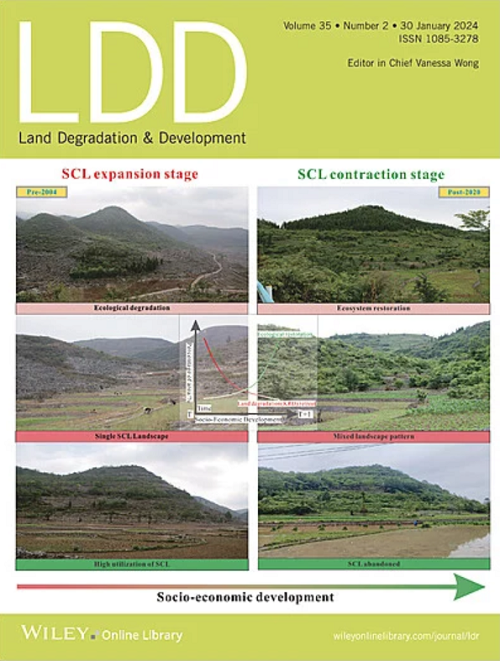区域水安全空间涵养规划:资源、环境和灾害的综合视角
IF 3.7
2区 农林科学
Q2 ENVIRONMENTAL SCIENCES
引用次数: 0
摘要
水安全空间涵养规划可以填补当前规划实践的空白。然而,水安全格局的基本概念和指标体系尚未得到足够的重视。通过多学科视角对水安全概念的比较分析,我们将水安全格局定义为能够保障区域水安全目标的景观空间分布。提出了“资源供给—环境保护—防灾”的区域综合水安全格局框架,并以深圳市为例进行了应用。结果表明:713万人(占深圳市人口的40.73%)生活在水灾害预防格局中;水资源、环境、灾害安全格局重叠面积仅占研究区面积的14.99%,空间失配明显。目标水安全区划要求有针对性的空间节约管理。综合水安全格局以宝安区和龙岗区分布面积最大。深圳市水安全格局与城市蓝线(88.57%)和基本生态控制线(69.45%)的匹配度较好,是对当地现有空间涵养性规划的补充。该框架适用于低洼湿润地区,为构建水安全模式提供了从理论到实践的系统方法。该研究为水资源相关的空间保护规划提供了有价值的见解,有助于制定更具弹性和可持续性的城市水安全战略。本文章由计算机程序翻译,如有差异,请以英文原文为准。
Spatial Conservation Planning for Regional Water Security: Integrating Perspectives of Resource, Environment, and Disaster
Spatial conservation planning for water security can fill the gaps left by current planning practices. However, the fundamental concept and index system of water security patterns have not yet received sufficient attention. Through a comparative analysis of water security concepts from multidisciplinary perspectives, we defined water security patterns as the spatial distribution of landscapes that could guarantee regional water security goals. We proposed a framework of regional integrated water security pattern of “resource supply—environmental protection—disaster prevention”, then applied this framework to Shenzhen City, China. The results showed 7.13 million people (40.73% of Shenzhen's population) lived within the water disaster prevention pattern. The overlapped area of security patterns of water resource, environment, and disaster only accounted for 14.99% of the study area, highlighting significantly spatial mismatches. Objective water security zoning required targeted spatial conservation management. The integrated water security pattern showed the largest distribution areas in the Bao'an and Longgang Districts. Moreover, Shenzhen's water security pattern matched well with urban blue line (88.57%) and basic ecological control line (69.45%), which was a supplement to the local existing spatial conservation planning. The proposed framework is applicable to low‐lying and humid regions, offering a systematic approach to constructing water security patterns from theory to practice. This study provides valuable insights for water‐related spatial conservation planning, contributing to a more resilient and sustainable urban water security strategy.
求助全文
通过发布文献求助,成功后即可免费获取论文全文。
去求助
来源期刊

Land Degradation & Development
农林科学-环境科学
CiteScore
7.70
自引率
8.50%
发文量
379
审稿时长
5.5 months
期刊介绍:
Land Degradation & Development is an international journal which seeks to promote rational study of the recognition, monitoring, control and rehabilitation of degradation in terrestrial environments. The journal focuses on:
- what land degradation is;
- what causes land degradation;
- the impacts of land degradation
- the scale of land degradation;
- the history, current status or future trends of land degradation;
- avoidance, mitigation and control of land degradation;
- remedial actions to rehabilitate or restore degraded land;
- sustainable land management.
 求助内容:
求助内容: 应助结果提醒方式:
应助结果提醒方式:


